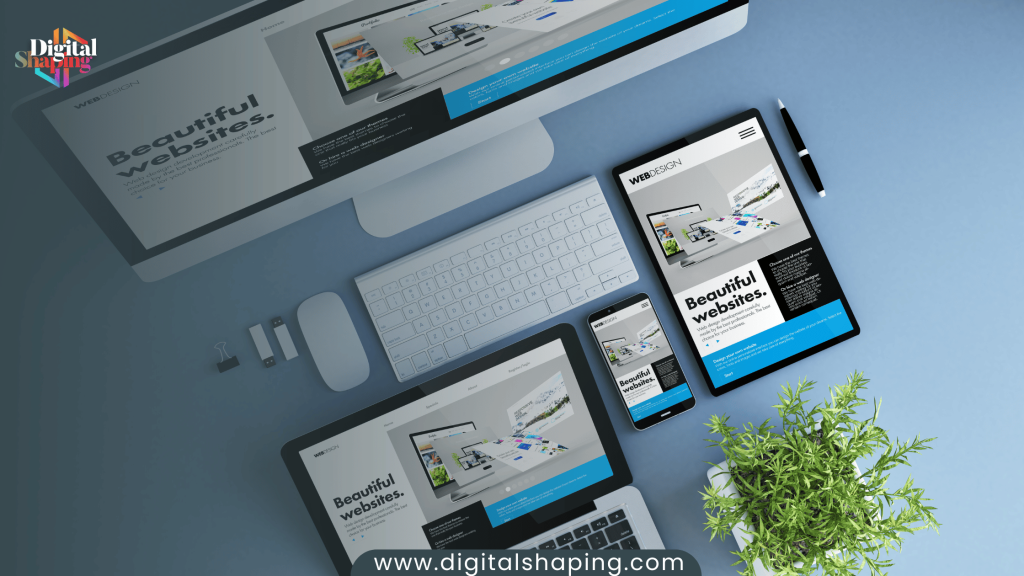For most startups, the website is where it all begins. It’s the first place your potential customers, investors, or partners will visit to learn about your brand. But here’s the thing: your website shouldn’t just look good. It needs to work well, rank well, and build trust from the first click.
If you’re in the process of launching or improving your startup’s site, this guide is here to help. Below is a web development checklist covering the key steps to build a website that not only looks great but also performs effectively and meets the expectations of your audience.
1. Know What You’re Building — Define Clear Goals
Before thinking about design, platforms, or code, get crystal clear on what your website is supposed to achieve.
Are you:
- Trying to generate leads?
- Selling products or services?
- Building a community or newsletter list?
- Offering educational content?
Your goals will shape everything, from the layout to the tools you use. For example, if lead generation is your priority, you’ll need fast-loading landing pages, well-placed forms, and compelling calls to action. If you’re running an e-commerce startup, product pages, secure checkout, and user-friendly navigation will take the lead.
The clearer your purpose, the easier the entire process becomes.

👉 Looking for expert WordPress development services? Check out how a tailored WordPress solution can boost your online presence and functionality.
2. Choose a Tech Stack That Fits Your Startup (Not What’s Trendy)
It’s easy to get caught up in buzzwords like React, Next.js, or serverless architecture. But the right choice depends on your team’s expertise, budget, and long-term needs.
Some popular options for startups:
- Frontend: React, Vue.js, or even Webflow for simpler builds.
- Backend: Node.js, Django, or Laravel.
- CMS (Content Management System): WordPress for flexibility, or Strapi if you’re going headless.
- Hosting: Vercel, Netlify, AWS, or DigitalOcean.
The best stack is the one that your team can handle confidently and that supports the features you actually need. Overcomplicating things early on often slows down your growth and increases your costs.
👉 Related Read: To avoid common ecommerce SEO mistakes and drive sustainable growth, focusing on CRO (Conversion Rate Optimization) is essential. Learn how optimizing conversion rates can unlock your e-commerce potential in this insightful article.
3. Make Mobile-First Your Default
More than half of web traffic now comes from mobile devices. This means your website must feel natural and easy to use on a phone, not just on a laptop.
Here’s what helps:
- Buttons that are easy to tap (no tiny links close together).
- Fonts that are readable without zooming.
- Images that scale correctly without slowing down the page.
- Menus that are simple to navigate.
Google’s research shows that 53% of mobile users leave a site if it takes more than 3 seconds to load. Don’t let a slow or clunky design push your visitors away before they even explore what you offer.

👉 Enhance your website’s performance with professional website development services in the USA. Learn how a robust, custom-built website can elevate your business today.
4. Build with SEO in Mind from Day One
If your site doesn’t show up when people search for the solutions you offer, you’re leaving growth on the table. Good SEO helps your ideal audience find you, without paid ads.
What to focus on:
- Use your main keywords naturally in your page titles, headers, and throughout the content.
- Add alt text for images to improve accessibility and rankings.
- Structure your content with H2 and H3 headings for better readability.
- Optimize loading speed and mobile responsiveness (Google favors fast, mobile-friendly sites).
- Link internally between your blog posts and service pages to guide visitors.
Search Engine Journal reports that 70% of marketers see SEO as more effective than pay-per-click ads for long-term success. So, the earlier you focus on SEO, the better.
5. Speed Matters More Than You Think
Nobody enjoys waiting. If your website is slow, people will click away, and Google will rank you lower.
Simple ways to improve speed:
- Compress images using tools like TinyPNG.
- Use modern formats like WebP for images.
- Enable caching and use a Content Delivery Network (CDN).
- Minimize unnecessary plugins.
Vercel’s 2025 data shows that just a one-second improvement in page speed can increase conversions by up to 7%. Fast sites don’t just feel better, they perform better.
6. Don’t Ignore Security — Protect Your Startup and Your Users
Startups are often easy targets for cyberattacks because many skip basic security steps. But even one security breach can damage your credibility.
Make sure to:
- Always use HTTPS with a valid SSL certificate.
- Keep your CMS, plugins, and software up to date.
- Use strong passwords and two-factor authentication.
- Protect your forms from spam and bots using tools like Google reCAPTCHA.
- Backup your website regularly.
If your site collects personal data, you’re also responsible for handling it securely and ethically. Ignoring this can lead to fines or, worse, a loss of trust.

7. Stay on the Right Side of the Law — Meet Compliance Standards
Legal compliance is often an afterthought, but it should be part of your initial planning.
Here’s what to check:
- Add a Privacy Policy and Terms of Service that clearly explain how you handle user data.
- Include cookie consent notices if your site tracks visitor behavior.
- Make sure your site is accessible to people with disabilities. This means screen-reader-friendly design, clear color contrast, and keyboard navigation support.
ADA compliance lawsuits against websites have been steadily rising in the US. Making your site accessible is not just the right thing to do; it protects your business legally.
8. Set Up Analytics — Measure What Matters
If you’re not tracking how people use your website, you’re guessing. Good analytics help you understand what’s working and what needs fixing.
Set up:
- Google Analytics 4 to track traffic and user behavior.
- Google Search Console to monitor your SEO performance.
- Heatmaps and session recordings with tools like Hotjar to see where users click and where they get stuck.
Define key metrics like conversions, bounce rates, and page views so you can make informed decisions instead of assumptions.
9. Keep Your Content Alive and Up to Date
Your website should grow with your business. Stale content sends the wrong signal to your audience and to search engines.
Ways to keep things fresh:
- Publish helpful blog posts that answer your customers’ real questions.
- Update your service or product pages as your offerings evolve.
- Share customer success stories, testimonials, or case studies.
A regularly updated website shows that your business is active, reliable, and invested in providing value.
Final Thoughts: Your Website Is Your Growth Partner
Your website is more than just a place to showcase your startup, but a tool to connect with your audience, build trust, and drive growth. When done right, it becomes one of your strongest assets.
If you’re ready to create a website that works hard for your business, the team at Digital Shaping is here to help. Let’s build something that not only looks good but delivers real results.

